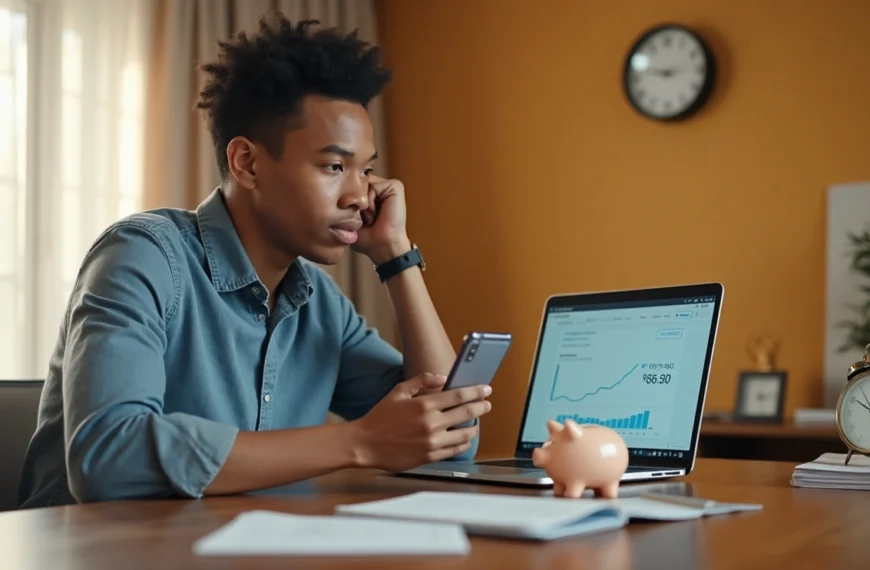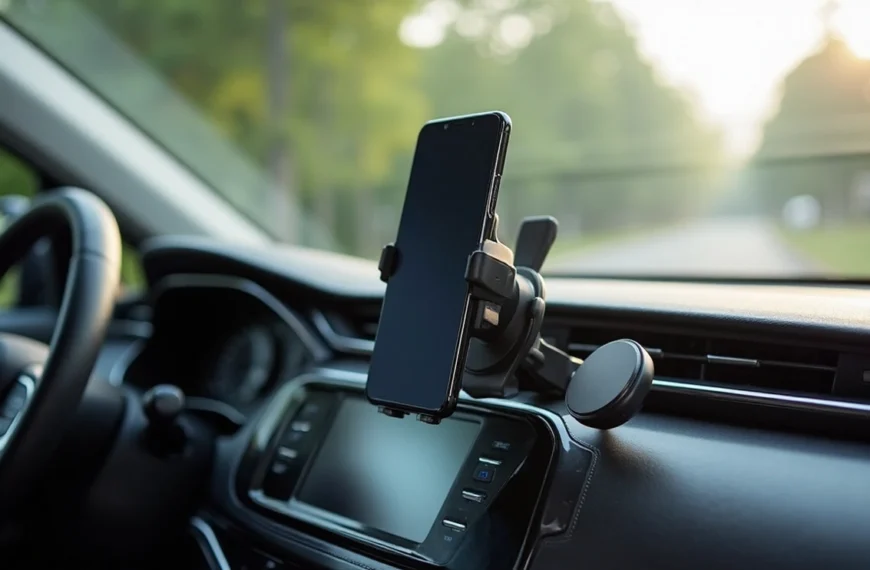Buy now pay later apps are changing how consumers shop faster, with the market projected to reach a staggering $184.05 billion by 2030. These services offer both benefits and major risks. A recent survey showed that 4 in 10 BNPL users had paid late on at least one of their loans in the last year. This raises questions about their safety and how they affect personal finances.
BNPL lets consumers make purchases and spread payments over time, usually without interest. These services provide available credit without hard credit checks and help manage cash flow for large purchases. However, they come with hidden dangers. More than half of adults using buy now and pay later services have faced problems with overspending, missed payments, and buyer’s remorse. Many users also fall into “debt stacking” by taking multiple loans at once.
This piece gets into the truth about BNPL services and cuts through marketing promises to show both opportunities and pitfalls. You’ll find how these payment options work, their real benefits, potential risks, and practical ways to use them responsibly.
What is Buy Now, Pay Later and How Does It Work?
Image Source: Idea Usher
BNPL services offer a unique type of short-term installment loan. Consumers can buy products right away and spread their payments over time. The BNPL market shows remarkable growth, estimated at $753.53 billion in 2022 and experts project it to reach $9.20 trillion by 2032, with a compound annual growth rate of 29%.
The simple guide to BNPL apps
BNPL apps connect shoppers and merchants as financial intermediaries. Consumers can choose the BNPL option during checkout, whether shopping online or in-store. The provider immediately pays the full amount to the merchant and lends that sum to the consumer for repayment in installments. Most providers run only a soft credit check that won’t affect credit scores. This makes these services available to people who have limited credit history.
Common repayment models like ‘Pay in 4’
“Pay in 4” stands as the most popular BNPL model that splits purchases into four equal payments. A $1,000 purchase would require $250 upfront at checkout, plus three more $250 payments over six weeks. This model has grown rapidly, showing a 300-400% increase in 2020 and generating about $15 billion in originations. Providers usually schedule payments every two weeks and automatically collect them from the customer’s registered payment method.
BNPL vs traditional credit
BNPL services work differently from credit cards. Short-term plans usually come without interest charges, and providers make money from merchant fees instead. Each BNPL transaction works as a separate loan rather than pulling from a revolving credit line. Regular payment activity doesn’t show up on credit reports with most BNPL providers. This means on-time payments won’t help build credit history. Severely late accounts might go to collections and hurt credit scores. The approval process also sets BNPL apart – providers make instant decisions at checkout and review each purchase separately instead of offering a permanent credit line.
The Benefits of Using BNPL Apps
Buy now pay later apps are not just convenient. These apps give consumers many benefits when they need flexible payment options. You can get interest-free financing and other services that regular credit cards don’t usually provide.
No hard credit checks for most users
Most BNPL providers only do soft credit checks to approve loans, unlike traditional credit options. Your credit score stays untouched, which makes these services available to people who don’t have much credit history. People who can’t qualify for regular credit can still get financing this way. The Consumer Financial Protection Bureau says approval mainly needs simple verification instead of a long credit history. You just need to be 18 years old, have a phone number, and own a debit or credit card for payments.
Interest-free installment options
The best thing about buy now pay later services is that they’re affordable. Most BNPL apps give you zero interest on their pay-in-four loans. You can use the service free if you pay on time, which is very different from credit cards with high interest on unpaid balances. Almost two-thirds of people who use pay-over-time value these interest-free payment offers as much as regular discounts, or even more.
Quick approval and easy access
BNPL applications are much simpler than traditional loans. You get your decision right at checkout. These providers approve you within seconds. This eliminates the waiting time you’d face with regular loan applications that can take days.
Helps manage cash flow for large purchases
Buy now pay later services give you practical ways to handle your money. They split costs into smaller amounts that you pay every two to four weeks. These payments line up with most people’s biweekly paychecks. You can refill your bank account before the next payment is due. People from all income levels use BNPL. In fact, 31% of people from both the highest and lowest yearly household income groups have tried these services at least once.
The Hidden Risks You Should Know
Image Source: The Penny Hoarder
Buy now pay later apps offer convenient payment schedules and instant approvals, but they hide several risks. You need to understand what it all means before these services become part of your financial strategy.
Late fees and potential interest charges
These services market themselves as interest-free, but they often hit users with hefty penalties for missed payments. The numbers tell a concerning story – 47% of BNPL users have missed a payment, up from 40% in 2023. Late payments can trigger fees of $30 or more. Short-term plans usually don’t charge interest, but some longer-term BNPL loans come with interest rates that can reach 36.99%. These rates make them more expensive than regular credit cards.
Overdraft risks from auto-payments
The data from 2021 shows that 90% of BNPL users connected their debit cards for automatic payments. This convenience comes at a price – insufficient funds lead to overdraft fees around $30. BNPL companies make things worse by trying to reauthorize failed payments up to eight times for a single installment. Users can face multiple overdraft charges within days.
Debt stacking and multiple loans
Users often take on more than one BNPL loan. The numbers are striking – 63% of borrowers had multiple loans running at once during the year, and 33% borrowed from different providers. Holiday seasons see these numbers spike even higher. People who managed four or more BNPL loans missed payments twice as often.
Lack of credit score improvement
Credit cards help build credit history, but BNPL services work differently. They don’t report on-time payments to credit bureaus. Your responsible payment behavior won’t help your credit score. All the same, missed payments can hurt your credit if the account goes to collections.
Returns and refund complications
Returns get messy with BNPL purchases. Consumers disputed or returned $1.8 billion in BNPL transactions in 2021. Refunds go to the BNPL provider instead of your account. Many users still make payments on returned items while waiting for their refund. Returns or disputes affect 13% of all BNPL transactions, which leads to frustrated consumers.
How to Use BNPL Safely and Responsibly
Image Source: Bankers Trust
Smart financial habits are vital to use buy now pay later apps without falling into debt traps. These strategies will help you enjoy BNPL benefits while keeping risks low.
Only use for planned, budgeted purchases
You should use BNPL only for essential, pre-planned expenses to stay financially healthy. Research shows smaller payments can make things look cheaper than they really are, which leads to overspending. Reserve these services for necessary items you’ve factored in your monthly budget, not impulse purchases. Make sure you’ll have enough income throughout the BNPL term to cover both installments and basic expenses. Adding BNPL payments will make things worse if you’re already struggling with money.
Stick to one BNPL provider
Using just one BNPL provider reduces financial headaches by a lot. Consumer Reports found people with four or more active BNPL loans were twice as likely to miss payments. One in four BNPL users have at least three active loans at once. This “loan stacking” happens because BNPL companies don’t share customer data, so your total credit limit might be more than you can repay. Having just one or two BNPL accounts helps you avoid taking on too much debt.
Match payments with your paycheck cycle
Your BNPL payment schedule should match when you get paid to prevent overdrafts and missed payments. Most BNPL services set up biweekly payments automatically withdrawn from your account, so matching these with your paydays means you’ll have money available. This arrangement helps you dodge both late fees from the BNPL provider and overdraft charges from your bank.
Read the fine print before agreeing
You must review all terms before accepting any BNPL agreement. Many people click agree at checkout without knowing their payment obligations, fees, or what happens if they miss payments. Look for late payment penalties, interest rates on longer terms, and refund policies. On top of that, check if the provider reports to credit bureaus and the consequences of missed payments. Taking time to understand these details will save you from surprises later.
Conclusion
The Real Bottom Line on BNPL Safety
Buy Now, Pay Later services are a double-edged sword for consumers in today’s financial world. These payment options bring real benefits through interest-free installments and easy access without credit checks. Yet dangerous pitfalls hide behind their convenient facade. Users face late fees, overdraft risks, and the trap of taking multiple loans at once.
Smart planning makes BNPL apps work better than impulse use. People who keep these services for planned buys and stick to one provider stay away from debt traps. They also line up payments with their paycycles. Smart users read the fine print before hitting “accept” to avoid surprise fees and hassles.
The BNPL market keeps growing fast—projected to reach $184.05 billion by 2030. This shows these services will stay prominent in retail. People need clear rules to use them safely. BNPL isn’t a financial hero or villain. These tools help or hurt based on how people use them.
Money experts say BNPL works best in specific cases. These include planned purchases within budget, short-term cash needs, or emergencies where other options cost more. Notwithstanding that, these services should not become your go-to payment choice for daily shopping or lifestyle upgrades you can’t afford.
BNPL safety comes down to the user’s money habits more than the services. Smart consumers who know both good and bad sides can use these payment options well. They avoid the debt cycles that trap almost half of all users. Your money’s health stays in your hands, whatever the marketing pitch says.
FAQs
Q1. Are Buy Now, Pay Later apps safe to use? Buy Now, Pay Later apps can be safe when used responsibly. They offer benefits like interest-free installments and quick approvals. However, they also come with risks such as late fees, potential overdraft charges, and the temptation to overspend. It’s crucial to understand the terms and use these services only for planned, budgeted purchases.
Q2. How do Buy Now, Pay Later services differ from traditional credit cards? Unlike credit cards, BNPL services typically don’t charge interest on short-term plans and don’t require hard credit checks. They treat each purchase as a separate loan rather than drawing from a revolving credit line. However, BNPL services generally don’t report regular payments to credit bureaus, so they don’t help build credit history like credit cards do.
Q3. What are the main risks of using Buy Now, Pay Later apps? The primary risks include late fees, potential overdraft charges from auto-payments, the temptation to take on multiple loans simultaneously (debt stacking), and complications with returns and refunds. Additionally, most BNPL services don’t contribute to building credit history, and missed payments can still damage your credit score if sent to collections.
Q4. How can I use Buy Now, Pay Later services responsibly? To use BNPL responsibly, only use it for planned, budgeted purchases. Stick to one BNPL provider to avoid overextension. Align payment schedules with your paycheck cycle to ensure sufficient funds. Always read the fine print before agreeing to terms, understanding late payment penalties and refund processes.
Q5. Do Buy Now, Pay Later services affect my credit score? Most BNPL services don’t report regular on-time payments to credit bureaus, so they typically don’t help build credit history. However, if you miss payments and your account is sent to collections, it can negatively impact your credit score. It’s important to make payments on time and understand the specific reporting policies of your BNPL provider.
References
[1] – https://appinventiv.com/blog/buy-now-pay-later-app-development/
[2] – https://www.myfinancialgoals.org/blog/the-double-edged-sword-of-buy-now-pay-later-convenience-meets-caution
[3] – https://bankful.com/blog/buy-now-pay-later-short-term-financing/
[4] – https://www.mckinsey.com/industries/financial-services/our-insights/buy-now-pay-later-five-business-models-to-compete
[5] – https://pirg.org/edfund/resources/buy-now-pay-later-plans-tips-to-avoid-the-pitfalls-3/
[6] – https://www.investopedia.com/buy-now-pay-later-5182291
[7] – https://www.consumerfinance.gov/about-us/blog/should-you-buy-now-and-pay-later/
[8] – https://www.nerdwallet.com/article/loans/personal-loans/buy-now-pay-later
[9] – https://www.paymentsjournal.com/bnpl-services-settle-in-as-a-cashflow-strategy/
[10] – https://seller.alibaba.com/businessblogs/buy-now-pay-later-systems-what-you-need-to-know-px002akgj
[11] – https://www.experian.com/blogs/ask-experian/pros-cons-of-buy-now-pay-later/
[12] – https://www.utfcu.org/blog/buy-now-pay-later-the-risks-behind-the-convenience
[13] – https://www.consumerreports.org/short-term-lending/new-buy-now-pay-later-loans-come-with-more-risks-a1161982784/
[14] – https://www.nclc.org/resources/new-rights-for-buy-now-pay-later-purchases/
[15] – https://www.yakimaherald.com/news/nation_and_world/business/avoid-the-debt-trap-7-dangers-of-buy-now-pay-later-apps/article_17924147-a848-56a4-8c73-37af3a21e63c.html
[16] – https://files.consumerfinance.gov/f/documents/cfpb_BNPL_Report_2025_01.pdf
[17] – https://www.consumerfinancialserviceslawmonitor.com/2025/01/cfpb-releases-report-highlighting-consumer-use-of-buy-now-pay-later-products/
[18] – https://www.consumerfinance.gov/ask-cfpb/will-a-buy-now-pay-later-bnpl-loan-impact-my-credit-scores-en-2117/
[19] – https://www.consumerfinance.gov/ask-cfpb/do-buy-now-pay-later-bnpl-loans-have-fees-en-2118/
[20] – https://www.consumerfinance.gov/about-us/newsroom/cfpb-takes-action-to-ensure-consumers-can-dispute-charges-and-obtain-refunds-on-buy-now-pay-later-loans/
[21] – https://dfpi.ca.gov/news/insights/tips-for-tricky-buy-now-pay-later-holiday-returns/
[22] – https://cluballiance.aaa.com/the-extra-mile/advice/budget/should-you-buy-now-pay-later
[23] – https://www.foxbusiness.com/personal-finance/financial-expert-warns-against-hidden-traps-buy-now-pay-later-services
[24] – https://dfpi.ca.gov/consumers/managing-debt/buy-now-pay-later-what-consumers-need-to-know/
[25] – https://www.cbsnews.com/news/buy-now-pay-later-bnpl-loans-groceries/
[26] – https://www.kansascityfed.org/research/economic-review/financial-constraints-among-buy-now-pay-later-users/
[27] – https://joingerald.com/blog/what-is-per-pay














![No Win No Fee Lawyers: The Hidden Truth About Settlement Cuts Legal representation through no win no fee lawyers gives clients a way to fight cases without paying anything upfront. Many clients don't know that these services take a big chunk of money after winning the case. Lawyers usually take 25% to 40% of what you win as their contingency fee. The amount lawyers take from settlements can add up fast. A $100,000 settlement means your attorney gets $30,000 if they charge a 30% fee after winning your case. Your solicitor's cut might be £10,000 from a £30,000 compensation award, based on your agreement percentage. This payment model stays pretty much the same for no win no fee lawyers in different places, though percentages can change. This piece breaks down what you need to know about contingency fee deals. You'll learn about standard fee ranges, extra costs beyond the basic fee, and times when this payment setup might not work in your favor. Smart clients should think over these money matters before signing up with a lawyer to make better choices about their legal help. What No-Win No-Fee Really Means Image Source: Express Legal Funding A no-win no-fee arrangement, also called a Conditional Fee Agreement, changes the way people get legal help. This payment approach removes the need to pay legal fees upfront and creates a partnership between clients and their attorneys. How contingency fees work No-win no-fee agreements are based on contingency fees. Lawyers get paid only when they win compensation for their clients. Most lawyers take between 25% and 40% of the final amount, based on how complex the case is and where it's filed. Lawyers take their cut after winning the case. To name just one example, see a case where a lawyer wins £30,000 in compensation with a 33% fee - they would receive £10,000. On top of that, some law firms use sliding scales where they charge less for quick settlements and more if the case goes to trial. The law requires a written agreement before any work starts. This paperwork spells out the lawyer's percentage, what costs you'll need to cover, and other key details. What happens if you lose the case The meaning behind "no-win no-fee" is clear - losing your case means you won't pay your lawyer anything. All the same, you should know about a few money-related details. You won't owe your lawyer when you lose, but some deals might make you pay for court fees, expert witnesses, or other case expenses. The other side could also ask you to pay their legal costs. Many lawyers suggest getting "After Event" insurance to protect their clients. These policies cover any costs if you lose your case, which makes the no-win no-fee setup much safer. Why lawyers offer this model Lawyers want to make legal help available to more people, so they offer these payment plans. This setup helps people who don't have much money take legal action when they have valid claims. The payment structure motivates lawyers to work hard. They only get paid by winning cases, which pushes them to get the best results possible. Lawyers carefully assess each case before taking it on a no-win no-fee basis. They usually accept cases that have a good chance of winning, since they put in lots of time and resources without any guaranteed payment. The Real Cost: How Much Do Lawyers Take from a Settlement Image Source: Greiner Law Corp. The true cost of no-win no-fee legal representation becomes clear once we look at contingency fees. Many clients feel surprised to see a big chunk of their settlement checks going to their attorney's fees. Typical percentage ranges (25%–40%) No win no fee lawyers typically ask for 25% to 40% of the total settlement amount. Personal injury attorneys usually take 33.3% (one-third) of the awarded compensation[101]. Lawyers and clients agree on this percentage before any work starts on the case. Several factors shape the final percentage. Your chances of winning, case complexity, and the work to be done play key roles in determining the attorney's cut. Some areas have laws that cap the maximum contingency fees for specific types of cases. Sliding scale based on case complexity Law firms often use a tiered fee system that changes with the case stage and complexity. This scale rewards quick settlements while paying attorneys fairly if more work becomes needed. The fee might start at 30% if the case settles before lawsuit filing. This number could climb to 35% after filing or reach 40% if the case goes to trial. Law firms often group cases by complexity: 10%-20%: Simple cases with straightforward settlements 25%-35%: Typical personal injury cases 35% and above: Complex cases requiring extensive resources Examples of payout breakdowns These ground examples show how fees affect settlements: A $15,000 settlement with a 33.3% contingency fee.pdf) puts $5,000 in the attorney's pocket, leaving $10,000 for the client. Similarly, from a $100,000 settlement with a 33% fee, the attorney gets $33,000 while the client receives $67,000[102]. Complex cases tell a different story. A $100,000 settlement with a 30% fee plus $5,000 in extra costs leaves $65,000 for the client after all deductions. These fees substantially change the client's final payout. Hidden Costs You Might Not Expect Image Source: Nelson Personal Injury Lawyers Beyond percentage-based fees, clients often feel surprised by extra costs that can reduce their final compensation by a lot. These hidden costs show up in the fine print of no-win no-fee agreements. You should think over these details before signing. Court filing and expert witness fees Legal proceedings come with unavoidable court filing fees. These charges differ by jurisdiction. They usually range from $30 for small claims to several hundred dollars for complex civil lawsuits. Expert witnesses can be expensive, with hourly rates ranging from $150 to $1,000 based on their credentials and testimony complexity. Expert witnesses charge more for court appearances than consultation work because of added pressure and prep time. Clients might still need to pay experts for their prep work even if the case settles before trial. Medical report and investigation costs Medical documentation is a vital part of many legal claims. These costs include fees to release medical records, create specialized reports, and prepare documents. Investigation costs cover evidence gathering, police reports, witness interviews, and other fact-finding work needed to build a strong case. Of course, some firms say they'll cover these expenses upfront, but clients don't completely avoid these costs. When these costs are deducted from your compensation Law firms take these expenses from the settlement amount before they calculate their percentage fee, though each firm handles this differently. Some lawyers subtract these costs after figuring out their contingency fee, which changes how much money clients end up with. Most firms pay case-related costs during the process and get their money back from the settlement. The defendant usually pays most simple legal costs and disbursements in successful cases, but not always everything. Insurance protects clients from costs in unsuccessful claims at many law firms, but this protection isn't guaranteed. Clients should review their agreements carefully since they might still need to pay specific expenses even if they lose their case. When No-Win No-Fee Might Not Be the Best Option Contingency fee arrangements give many people access to justice. However, this payment model doesn't always work in a client's best interests. Knowing these limitations helps clients make better decisions about their legal representation. Cases with unclear liability Lawyer no win no fee arrangements work best in cases where fault is clear. We assessed the probability of success before taking contingency cases. Lawyers might turn down cases if there isn't enough evidence of the other party's negligence or if liability isn't certain. Cases with multiple responsible parties create more challenges. The situation gets complicated fast when several parties share liability. Lawyers are less likely to take these cases on contingency. They need to be confident they can prove the other party's negligence before accepting a case. Low-damage or low-payout claims Small claims often don't work well with the contingency model, even with real injuries. Cases that have minimal injuries or limited financial damages might not bring enough compensation to cover legal costs. The potential settlement needs to be big enough to pay for investigations, witness interviews and court fees. Personal injury lawyers often turn down cases where the "compensation potential" is too small. This doesn't mean the claim isn't valid - it just means the economics don't add up for a contingency arrangement. Situations where hourly billing may be better Hourly billing has clear advantages in certain cases. Clients see exactly what they're paying for - every hour worked and task completed. This model works well for cases that need lots of attention but don't have clear financial outcomes. Complex litigation with opposing parties works better with hourly billing and a retainer fee. Clients have more control over their case and don't feel pressured to settle quickly. Cases that need extensive preparation but have uncertain outcomes fit the hourly model better. Lawyers can spend the time needed without worrying about contingency limits. This approach often leads to better representation, especially for complex legal issues that need special expertise. Conclusion Understanding the Full Picture Before You Sign No-win no-fee arrangements offer legal representation without upfront costs. Of course, this seems attractive at first glance. In spite of that, you need to think about how these agreements can affect your final compensation. Legal fees usually range from 25% to 40% of your settlement - but that's just the start. You'll face more deductions like court filing fees, expert witness costs, and charges for medical documentation. What looks like a "free" service ends up taking a big chunk of your compensation to cover legal expenses. These arrangements work best in specific situations - cases with obvious liability, substantial damages, and solid evidence. If you have a low-value claim or complex liability issues, traditional hourly billing might serve you better. Without doubt, you should ask for clear explanations of all possible costs before signing anything. Read the fine print closely, especially when you have to deal with expenses in unsuccessful cases. Ask to see sample settlement breakdowns that show all deductions. This helps you picture what you might actually take home. Your choice to go with a no-win no-fee arrangement depends on your situation. This model helps if you don't have money to pursue valid claims. But if you have a strong case and enough funds, other fee structures might let you keep more of your compensation. Whatever payment model you choose, knowing exactly how much lawyers take from settlements helps you make better decisions. This knowledge lets you approach legal representation with real expectations and better control over your money. FAQs Q1. What percentage of a settlement do no-win no-fee lawyers typically take? No-win no-fee lawyers typically charge between 25% to 40% of the final settlement amount as their contingency fee. The exact percentage often depends on the complexity of the case and the stage at which it is resolved. Q2. Are there any hidden costs in no-win no-fee arrangements? Yes, there can be additional costs beyond the lawyer's percentage fee. These may include court filing fees, expert witness costs, medical report expenses, and investigation costs. These expenses are usually deducted from the settlement amount before or after the lawyer's fee is calculated. Q3. What happens if I lose my case in a no-win no-fee arrangement? If you lose your case, you generally won't have to pay your lawyer's fees. However, you might still be responsible for certain expenses like court costs or the opposing party's legal fees. Many lawyers offer insurance to protect clients from these potential costs in case of an unsuccessful claim. Q4. When might a no-win no-fee arrangement not be the best option? No-win no-fee arrangements may not be ideal for cases with unclear liability, low-value claims, or complex legal issues requiring extensive preparation. In these situations, traditional hourly billing might be more appropriate and potentially more cost-effective for the client. Q5. Can I negotiate the percentage a lawyer takes from my settlement? Yes, the contingency fee percentage is often negotiable. It's typically agreed upon and formalized in writing before the lawyer begins working on your case. Don't hesitate to discuss the fee structure with your lawyer and ask for a detailed breakdown of potential costs and deductions.](https://consumersweek.com/wp-content/uploads/2025/06/No-Win-No-Fee-Lawyers-The-Hidden-Truth-About-Settlement-Cuts-870x570.webp)


